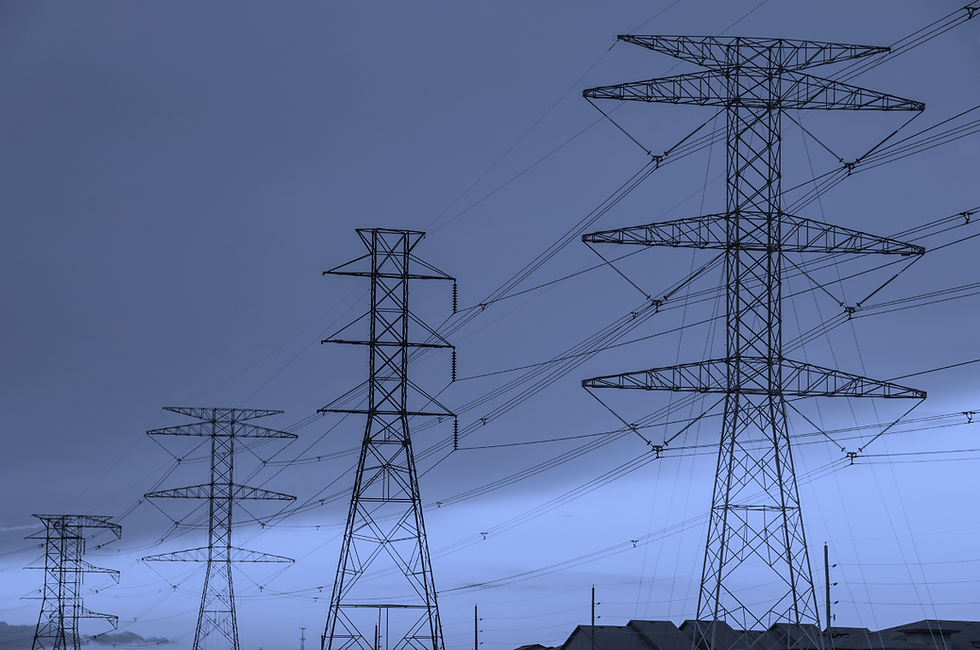Cleaner By the Dozen: Electricity
- Matt Patterson

- May 17, 2022
- 5 min read
By Josiah Neeley & Matt Patterson, May 17, 2022

Introduction
Over the past several months, TXEnergyProject worked closely with R Street Institute to identify and develop conservative policy approaches in the Texas energy sector. The goal was to identify conservative policies that facilitate reduced emissions, innovation, and environmental protection without the burdensome regulatory hand of government. The product of those efforts, Cleaner By The Dozen: Twelve Reforms to Make Texas Cleaner, Stronger, and Freer highlights the importance of conservative principles in several areas of energy policy. The following is adapted from that paper.
Electricity
The electricity sector produces the highest share of overall emissions in Texas. In 2018, 33.9 percent of total energy-related CO2 emissions came from the electricity sector. Electricity is also the sector that has seen the biggest emissions reductions in recent years. Electricity related emissions in Texas fell 12.5 percent between 2007 and 2018, and, in 2018, emissions were the lowest they had been since 1996.[i] This decline is even more striking when one considers that, unlike most regions of the country where electricity usage has flattened or declined, electricity use in Texas has continued to expand.
These reductions have been helped by Texas’ regulatory model, which favors retail electric choice and a competitive generation market over political decision-making. An emerging body of research shows that electric competition helps to keep emissions low for several reasons.[ii]
First, competition provides incentives for electricity generators to cut costs, increase efficiency and voluntarily pursue prudent investments in resource deployment and innovation.[iii] Empirical evidence demonstrates that competition helps drive reductions in abatement costs via improvements in generation efficiency; investment in new, low-cost technologies; and reductions in environmental compliance costs.[iv] Importantly, merchants internalize investment risk, whereas regulated monopolies socialize it. This makes the competitive model conducive to encouraging deployment and innovation in new technologies that are both lower-cost and lower-emissions than prior generations.
Second, competitive electricity allows for rapid shifts in the market as technology advances without the need for government direction or inducements. As a result, states with prices set by markets have tended to see electric rate declines over the past decade, whereas monopoly states have mostly seen rate increases.[v]
Third, competition makes generators more responsive to consumer demand, including the growing demand for clean or low-emissions energy. Indeed, industrial and commercial electricity consumers are leading the charge on voluntary clean energy procurement. In addition, the rise of corporate sustainability goals has amplified the appetite for clean energy, which can be procured at a lower cost in a competitive system than it can be through the incumbent monopoly model.[vi] The advantages of retail electricity choice extend across all consumer classes and, when properly implemented, are key components in driving the premium for clean energy down.[vii] Retail choice also presents a more efficient and equitable model to allocate a “green premium,” whereby retail agreements reflect the differences between consumers in their willingness to pay for products with clean attributes. Facilitating competition for clean products organically drives their costs down, which in turn drives total abatement costs down throughout the electricity ecosystem. By contrast, mandates and subsidies for clean energy are cost-additive and fail to reflect differences in consumer preference.
There are, however, strategies the state can implement to heighten the competitive efficiency of the electrical grid and help lower emissions. Below are three of the strongest reform options that Texas could, and should, adopt:
1) Make public the information necessary for optimal distributed-generation siting decisions
One area of striking energy innovation in recent years is the growth of so-called distributed generation or distributed energy resources (DERs). While defying easy categorization, DERs include all resources located on the distribution system, rather than those that come from large power plants. Where DERs are located can have implications for the electric grid. In some areas, DERs may increase the reliability of the grid or lower costs, whereas in other areas, adding additional DERs could trigger the need for expensive infrastructure upgrades to maintain reliability. Putting hosting-capacity information online would help DER developers better match the siting of their facilities to the needs of the grid.
2) Allow more dynamic pricing to achieve least cost-demand response
For the electric grid to function properly, supply (the amount of electricity generated) and demand (the amount of electricity used by consumers) must be perfectly matched in real time. Over the last few years, a small number of companies have begun offering retail customers plans with rates indexed to the real-time wholesale market. The downside of this approach became evident during Winter Storm Uri, when a handful of customers ended up with monthly bills in excess of $10,000.[viii] In response, the Texas legislature banned companies from offering retail electric plans with rates indexed to the wholesale electric market.[ix] Unfortunately, in implementing this legislation, the Public Utility Commission of Texas (PUC) issued an overly broad rule that will prohibit many types of potentially valuable dynamic pricing that enables price responsiveness from consumers. The PUC’s action should be rolled back to reflect the legislature’s intent to ban index pricing rather than all dynamic pricing.
3) Allow batteries to participate in the ancillary services market where technically feasible
Another new technology with significant emissions reduction potential is battery storage. Batteries not only complement variable generation resources such as wind or solar, but they can also serve as a means to shift electricity generation from nonpeak to peak periods, resulting in a more reliable and cheaper electric grid. Texas lawmakers should ensure that existing regulations do not shut out batteries or other forms of energy storage from places where they could provide value. A clear example of this can be seen in the market for ancillary services.
For an in-depth analysis of these recommendations, visit the complete version of Cleaner By The Dozen: Twelve Reforms to Make Texas Cleaner, Stronger, and Freer. TXEnergyProject will continue to highlight each reform discussed in the study in the coming weeks.
[i] Calculations based on EIA data. [ii] See, e.g., Devin Hartman, “Environmental Benefits of Electricity Policy Reform,” R Street Policy Study, No. 82, January 2017. https://2o9ub0417chl2lg6m43em6psi2i-wpengine.netdna-ssl.com/wp-content/uploads/2018/04/82-1.pdf. [iii] Lucas W. Davis and Catherine Wolfram, “Deregulation, Consolidation, and Efficiency: Evidence from U.S. Nuclear Power,” National Bureau of Economic Research, August 2011. http://www.nber.org/papers/w17341.pdf [iv] Hartman, p. 7, 8. https://2o9ub0417chl2lg6m43em6psi2i-wpengine.netdna-ssl.com/wp-content/uploads/2018/04/82-1.pdf. [v] See, e.g., Philip R. O’Connor, “Restructuring Recharged: The Superior Performance of Competitive Electricity Markets 2008-2016,” Retail Energy Supply Association, April 2017. https://www.resausa.org/sites/default/files/RESA_Restructuring_Recharged_White%20Paper_0.pdf. [vi] See, e.g., Electricity Consumers Resource Council, “2020 Priorities,” 2019. https://elcon.org/wp-content/uploads/ELCON-2020-Outlook.pdf. [vii] See, e.g., Hartman. https://2o9ub0417chl2lg6m43em6psi2i-wpengine.netdna-ssl.com/wp-content/uploads/2018/04/82-1.pdf. [viii] Giulia McDonnell Nieto del Rio, Nicholas Bogel-Burroughs and Ivan Penn, “His Lights Stayed on During Texas’ Storm. Now He Owes $16,752,” New York Times, Feb. 20, 2021, https://www.nytimes.com/2021/02/20/us/texas-storm-electric-bills.html [ix] Texas Utilities Code 39.110.










